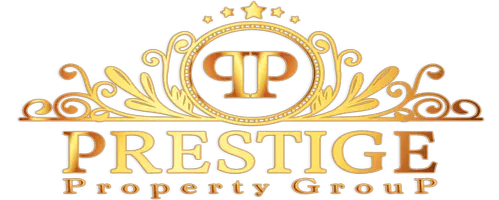What Is Owner Financing? How It Works for Buyers and Sellers

Buying a home usually involves getting a mortgage from a bank or lender. However, not every buyer qualifies for traditional financing or wants to go that route. That’s where owner financing comes in. This alternative gives buyers another way to purchase a property while offering sellers flexibility and potential financial benefits. Whether you’re looking for a house in Los Angeles, CA or a home in Chicago, IL, this Redfin article explains what owner financing is, how it works, the common types , and when it makes sense for buyers and sellers.

What is owner financing?
Owner financing, sometimes called seller financing, is when the home seller acts as the lender instead of a bank. Instead of applying for a traditional mortgage, the buyer makes payments directly to the seller based on an agreed loan term and interest rate.
Think of it like the seller extending credit to the buyer: the buyer pays in installments over time, and the seller holds the financing note until the property is paid off or refinanced.
How does owner financing work?
Here’s a breakdown of how owner financing typically works:
- Agree on terms: Buyer and seller agree on the purchase price, down payment, interest rate, repayment schedule, and loan term.
- Sign a promissory note: The terms are put into a legally binding contract called a promissory note, which outlines repayment obligations.
- Make a down payment: Buyers typically put down a larger amount than they would with a traditional mortgage to reduce the seller’s risk
- Pay monthly installments: Instead of paying a bank, the buyer makes monthly payments directly to the seller, often including principal and interest.
- Plan for a balloon payment (sometimes): Many owner-financing arrangements require a large final “balloon payment” after 3–5 years, at which point the buyer may refinance with a traditional lender to pay off the balance.
- Transfer of deed: Depending on state laws and the agreement, the buyer may receive the property deed right away or only after the loan is fully paid.
Example of owner financing
Let’s say a home is listed for $250,000.
- The buyer puts down $40,000.
- The seller finances the remaining $210,000 at 6% interest over 30 years.
- The buyer pays the seller around $1,260 per month in principal and interest.
- If there’s a 5-year balloon clause, the buyer will need to refinance or pay the remaining balance at that time.
This shows how payments go directly to the seller rather than a bank – often with a balloon payment requiring refinancing later.
Pros and cons of owner financing
Benefits for buyers
- Easier qualification: May help those who don’t meet traditional lending requirements.
- Faster closing: No lengthy bank approval process.
- Flexible terms: Interest rates, repayment schedule, and down payment can be negotiated.
Risks for buyers
- Balloon payment pressure: Buyers may struggle to refinance or pay the lump sum when it is due.
- Higher interest rates: Terms can be less favorable than bank financing.
- Buyer vulnerability: In land contracts, default can mean losing both the home and all payments made.
- Limited credit reporting: Payments may not build credit if the seller doesn’t report them.
Benefits for sellers
- More potential buyers: Attracts buyers who can’t get conventional loans.
- Steady income: Collect monthly payments with interest.
- Sell faster: Can help move a property more quickly in a slow market.
Risks for sellers
- Default risk: Sellers face the risk of buyers failing to pay.
- Due-on-sale clause: If the seller still has a mortgage, their lender may demand immediate repayment.
- Legal complexity: Must comply with state laws and draft airtight contracts to avoid disputes.
- Carrying the loan: Ties up the seller’s capital and shifts long-term risk to them.
Common types of owner financing
Owner financing isn’t one-size-fits-all. Buyers and sellers can structure agreements in different ways depending on their needs, state laws, and risk tolerance. Always work with a real estate attorney to draft these agreements. Here are the most common types you’ll see:
Land contract / contract for deed
In this setup, the seller keeps legal title to the property until the buyer makes all payments under the contract. The buyer has what’s called “equitable title,” which gives them the right to live in and use the property. Once the loan is fully paid off (or refinanced), the seller transfers the deed to the buyer. These agreements are relatively simple but can be risky for buyers if they default, since they may lose both the home and the payments they’ve made.
Lease-purchase agreement
Also known as a rent-to-own contract, this type of owner financing allows the buyer to lease the home with the option, or sometimes the obligation, to purchase it at the end of the lease term. A portion of the rent may be credited toward the down payment or purchase price. This can help buyers who need time to improve credit or save money, though the terms are heavily dependent on the initial contract.
Mortgage or deed of trust
With this structure, the buyer receives the deed and becomes the legal owner right away, but the seller keeps a lien on the property until the loan is paid in full. This setup is more secure for buyers and functions much like a traditional mortgage.
Wraparound mortgage
A wraparound mortgage (or “wrap loan”) happens when the seller still has an outstanding mortgage on the property. The seller continues paying their original loan while the buyer makes payments to the seller on a new, larger loan that “wraps around” the existing one. Wraparound mortgages can be attractive for buyers who want easier qualification, but they carry higher risk if the seller fails to make payments on the underlying mortgage.
Second mortgage financing
Instead of financing the entire purchase, the seller might carry a second mortgage while the buyer takes out a primary loan from a bank. For example, the bank lends 80% of the purchase price, the buyer puts down 10%, and the seller finances the remaining 10%. This can help buyers bridge financing gaps while still getting a traditional loan, but adds complexity
When should you consider owner financing?
Owner financing isn’t the right choice for everyone, but it can make sense in certain situations:
As a buyer
- You don’t qualify for a conventional loan due to credit history or self-employment income.
- You want to move quickly without waiting on lengthy bank approvals.
- You can make a strong down payment but need flexible loan terms.
- You’re planning to refinance later but need a short-term solution to purchase now.
As a seller
- You want to expand the pool of potential buyers, especially in a slow market.
- You don’t need the entire sale price upfront and prefer steady income from monthly payments.
- You’re willing to take on some risk in exchange for potentially earning more through interest.
- You own the property outright (no mortgage) and can finance without restrictions from a lender.
If any of these apply, owner financing could be worth exploring, just make sure to involve a real estate attorney to protect both parties.
Alternative financing options
If owner financing isn’t the right fit, buyers may explore other creative or flexible financing options, such as:
- FHA loans: Backed by the Federal Housing Administration, FHA loans allow lower down payments (as little as 3.5%) and are accessible to buyers with less-than-perfect credit.
- VA loans: For eligible veterans, active-duty service members, and military spouses, VA loans offer no down payment and competitive rates.
- USDA loans: Designed for rural and some suburban areas, USDA loans provide 100% financing for qualifying buyers.
- Lease-to-own agreements: Similar to lease-purchase but less formal, these arrangements let buyers rent a property with the option to buy later, applying some rent toward purchase.
- Hard money loans: Short-term loans from private lenders, often used by real estate investors. These come with higher interest rates but faster approvals.
- Shared equity financing: A third party, such as an investor or nonprofit, helps with the down payment in exchange for a share of the home’s future appreciation.
Exploring these alternatives can help buyers find a financing path that fits their situation while still keeping homeownership within reach.
Frequently asked questions about owner financing
1. Is owner financing legal?
Yes, but terms vary by state. Always work with a real estate attorney to structure the agreement.
2. Why would someone offer owner financing?
Sellers may offer owner financing to attract more buyers, sell a property faster, or generate income from monthly payments with interest. It’s especially appealing if the seller owns the home outright and doesn’t need the full sale price upfront.
3. Who holds the deed in owner financing?
It depends on the type of agreement. In a land contract, the seller keeps the deed until the loan is fully paid. In a mortgage or deed of trust arrangement, the buyer gets the deed right away but the seller keeps a lien until the balance is cleared.
4. Who pays property taxes in owner financing?
Typically, the buyer is responsible for property taxes and insurance once they take possession, even if the seller still holds the deed. This should be spelled out clearly in the financing agreement.
5. Does owner financing hurt your credit?
Not necessarily. If the seller reports payments to credit bureaus, it may help build the buyer’s credit. However, many private agreements aren’t reported, which means timely payments won’t improve credit, and missed payments may only hurt if the seller takes legal action.
6. What interest rate is typical in owner financing?
Rates are negotiable but often slightly higher than conventional mortgage rates.
7. Can the buyer refinance later?
Yes. Many owner-financing deals are designed with a short-term loan that buyers eventually refinance into a traditional mortgage.
8. Does the seller still have to pay their own mortgage?
If the seller has an outstanding mortgage, they must keep making payments. Not all lenders allow owner financing in this situation, so legal review is essential.
The post What Is Owner Financing? How It Works for Buyers and Sellers appeared first on Redfin | Real Estate Tips for Home Buying, Selling & More.
Categories
Recent Posts










GET MORE INFORMATION

